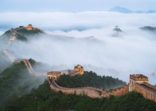In the US, the firm’s ETF assets under management went to $200bn from $50bn in five years, and Europe had similar explosive growth, said Espeskog, who recently moved to Hong Kong from iShares in Scandinavia to head ETF sales in Asia.
“These regions had the same questions you find in Asia – no retrocession fees, they’re not liquid, who will buy them.
“We are optimistic from this history that Asia will follow. We see the trend starting to pick up with a lot of Asian wealth clients using our US and European platforms when they buy ETFs.”
To help drive growth, iShares in Asia has added three to the team this year. Besides Espeskog, Jason Miller relocated from New York to cover Japan and Sean Cunningham left London to head capital markets in Asia.
Ishares AUM in Asia (ex-Japan and Australia) is up 80% since 2013, according to client data from the firm. As of June 2015 AUM was $30.8bn in the region, up from $18.9bn in June 2013.
However, by comparison, Europe AUM for the firm is around $250bn.
In 2014, 75% of new inflows from the private wealth segment in Asia came into the firm’s UCITS range, partiuclarly Europe-focused UCITS vehicles, Espeskog said. He believes a lower withholding tax in Europe than in the US and a little more overlap in time zones to facilitate trading, as well as ample liquidity, have been attractive to Asian investors.
Lack of traction in Asia
ETFs have low penetration in Asia relative to Europe and the US for various reasons. In particular, the advisory business is still commission-based (as opposed to fee-based), and therefore advisors have less incentive to use the cheaper ETFs.
However, the models are changing, he believes.
He’s seeing growth in the fee-based advisory model in Asia, and cited a private banking client in Asia that grew its discretionary business to $2bn from $200m over three years.
“The retrocession model is still very much alive, but it’s not necessarily a conflict with ETFs,” he said. “ETFs and active funds together constitute core portfolios.
His single biggest challenge in getting traction with ETFs in Asia is educating the market.
“If distributors don’t put ETFs on the shelf, clients won’t buy them. It comes down to how visible ETFs are on the shelf.”
As the wealth market matures in Asia, he believes people will see ETFs as part of balanced portfolio. “We’ve seen this before in Europe. In five years, the landscape will change dramatically.”
MRF plans
So far this year, iShares has not launched a product in Asia. Espeskog wouldn’t comment on plans for future launches.
He did say that regulators are expected to include ETFs in the mutual recognition of funds initiative and his firm has strong interest in the initiative.
A key requirement for funds to be eligible for the MRF is that they are Hong Kong-domiciled, and Espeskog said iShares has 15 Hong Kong-domiciled funds.
“[The MRF process] is not one hundred percent clear yet. Regulators are still working out how it will work [in China]. But we are in active discussions with authorities about the MRF.
“Of all ETF providers we have the most funds that would qualify [for MRF] in terms of track record and size.”
















